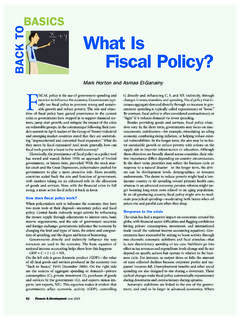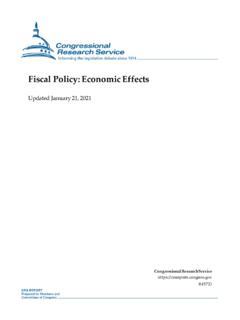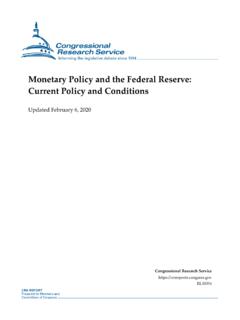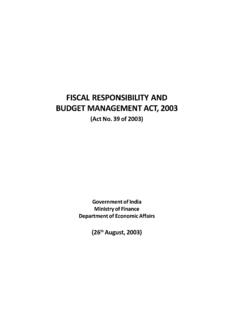Transcription of The IS-LM Model - Massachusetts Institute of Technology
1 The IS-LM Model Investment: Interest sensitive component of goods demand. IS curve: equilibrium in the goods market. As interest rates rise, output falls. LM curve: equilibrium in the money market. As output rises, interest rates rise. Comparative statics: Changes in autonomous spending. policy : fiscal and monetary . Investment demand Investment demand: I = I(Y,i). +,- As output rises, investment demand increases. As interest rates rise, investment demand falls. Intuition: Firms borrow to pay for investment project. With higher cost of borrowing, project is less likely to make a profit (net of interest payments). Alternative view: Manager should only put money in investment projects that yield a rate of return that is higher than the shareholder's opportunity cost of funds. IS Curve Demand: Z = C(Y-T) + I(Y,i) + G. Equilibrium: Y = C(Y-T) + I(Y,i) + G. Movements along the IS curve: As interest rates rise, output falls.
2 Shifts in the IS curve: As government spending increases, output increases for any given interest rate. IS Curve: At lower interest rates, equilibrium output in the goods market is higher. i i1. i2. IS. Y1 Y2 Y. An increase in government spending shifts out the IS curve. i i0. IS'. IS. Y0 Y'0 Y. LM Curve Demand for real balances: Md /P = Y L(i). Equilibrium in money market: Md=M. LM Curve: M /P = Y L(i). Movements along the LM Curve: An increase in Y. increases money demand, which causes an increase in interest rates to maintain money market equilibrium. Shifts in the LM curve: An increase in money supply lowers interest rates at any given level of output. LM Curve: At higher levels of output, equilibrium in the money market implies higher interest rates. i LM. i2. i1. Y1 Y2 Y. An increase in money supply shifts the LM Curve. At the current level of output, the interest rate required to maintain equilibrium in the money market is lower.
3 I LM. LM'. i0. i0'. Yo Y. Equilibrium in goods and money market: i LM. i*. IS. Y* Y. Comparative statics: Decrease in autonomous consumption. Increase in government spending: fiscal policy , output and interest rates. Increase in money supply: monetary policy , output and interest rates.
















